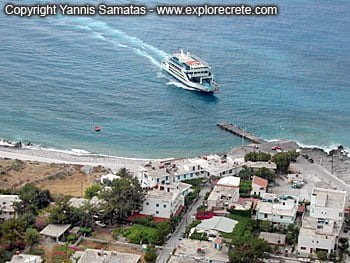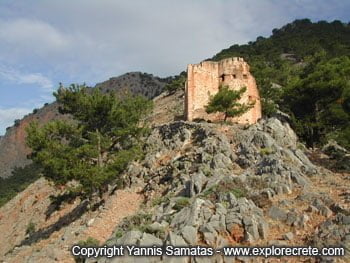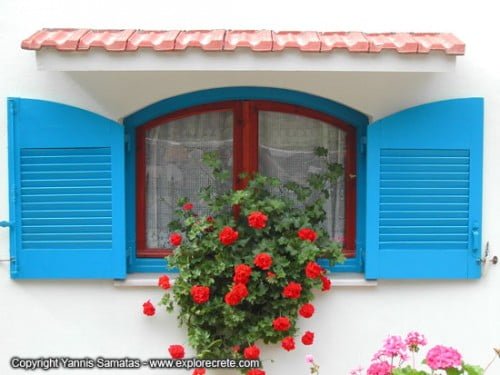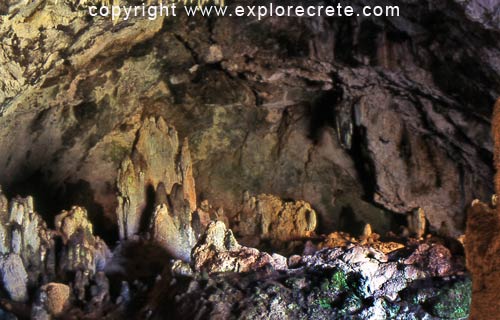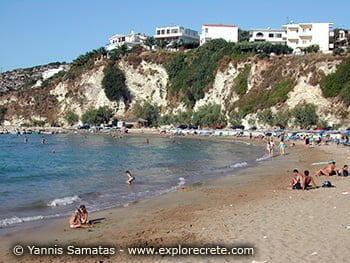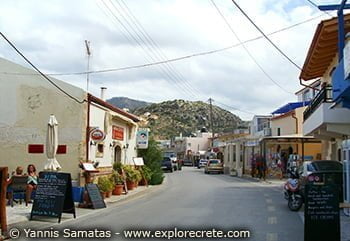Koustogerako village in Western Crete
Koustogerako or Koustoyerako
Koustogerako or Koustoyerako is a small mountain village in the south of the region of Chania, 10 kilometres from the coastal town of Sougia.
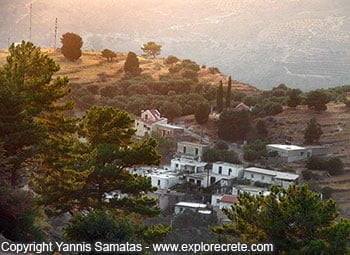
Just before Sougia is the start of the winding road up the White Mountains, passing through Livada and then Koustogerako, which clings 500 metres up the Cretan mountainside.
The scenery is typical of the mountainous south of Chania Prefecture, with high mountains and deep gorges. The slopes are covered with pine and cypress, with a glorious view of the valley before Sougia and the peaks opposite.
Shortly before entering Koustogerako you will see the war memorial with the names of those executed here by the Nazis during the Second World War.
History of Koustogerako
Koustogerako seems an insignificant little village, but in fact it has played its part many times in the fight for freedom and paid for it dearly.
It is mentioned in an 800-year-old manuscript as Christou Geraki (Christ’s Hawk), and is the birthplace of Georgios Kandanoleon (also mentioned as Georgios Gathanoleos), the leader of the rising against the Venetians in 1527.
The Venetians twice destroyed the village in reprisals, as did the Turks after the 1821 Revolution and the Germans on 1 September 1943, when they executed the inhabitants of three neighbouring villages: Koustogerako, Livadas and Moni.
What to do in Koustogerako
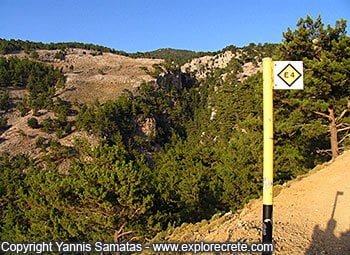
At Koustogerako there is only a café for a quick stop. The village is built amphitheatrically on the mountainside, well hidden from the sea, perhaps for fear of pirates many centuries ago.
If you’re not afraid of driving on dirt tracks, take the road through the village and up the Madara, the forested White Mountains. The dirt road is passable even with a normal car as long as it’s not too low and heavily loaded.
We got as far as the shepherds’ gate with the European E4 Footpath sign. Leave the car for a while, admire the wonderful forest blanketing the steep slopes around you, and breathe in the scent of pine and thyme.
The festival of Agia Ekaterini
Roughly three kilometres after Koustogerako there is a small road leading to the church of Agia Ekaterini (St Catherine). It is said that, during the Second World War, German soldiers went looking for a band of andartes (resistance fighters) hiding in a local cave.
One of the andartes had an icon of St Catherine, to which they all prayed and swore that, if they escaped the Germans, they would build a church in her honour. To seal the oath they wrote their names on the icon. A thick fog fell on the mountains and the soldiers were forced to abandon the search, allowing the andartes to make their escape.
The church of Agia Ekaterini was built after the war and a festival is held here on 25 November every year.
Hiking around Koustogerako
Sougia – Koustogerako – Omalos
The E4 path leads from Koustogerako to the Omalos Plateau, but the route is hard and tiring. The Sougia – Koustogerako – Omalos trek takes about 8 hours.
Koustogerako – Cyclops Cave – Sougia
There is also a 4-hour path down from Koustogerako to the seaside village of Sougia, past the Cyclops Cave. This is a cave south of the village of Livadas, which resembles the cave of the Cyclops Polyphemus, a one-eyed giant described by Homer in the Odyssey.
© explorecrete.com All Rights Reserved. Reproduction or copying without permission is prohibited.

